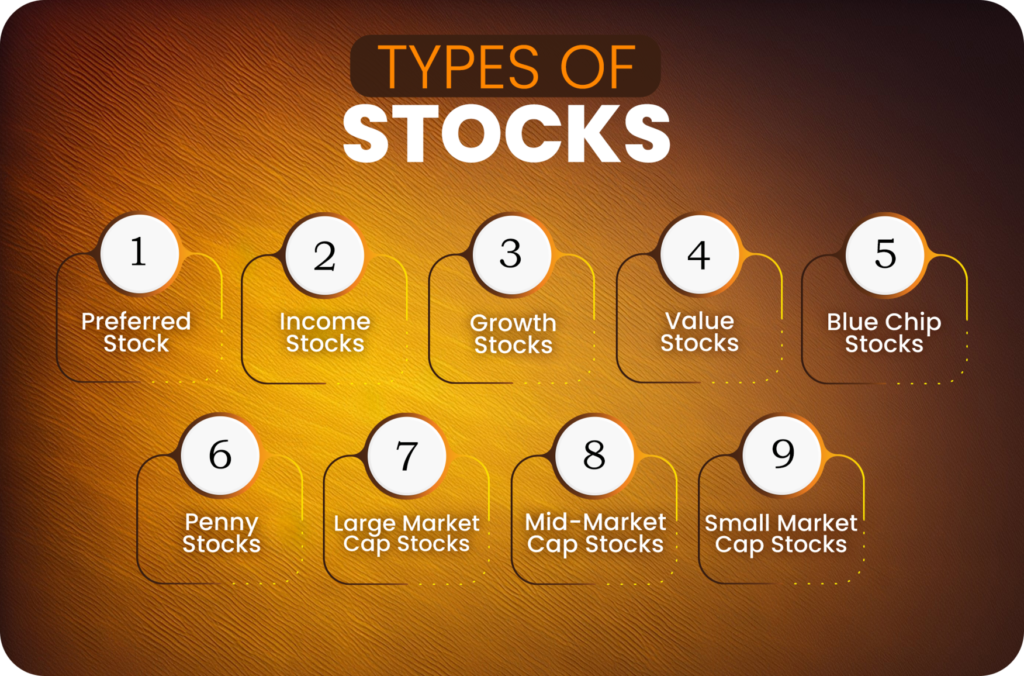Stock Market Basics for Beginners
Are you a beginner interested in stock market trading or investment but don’t know how to start? Here is a guide to learn Stock Market Basics for beginners.
The Stock Market is amongst the most popular financial markets globally. With numerous companies and many opportunities, it is getting all the hype these days.
Many people want to start investing money in the stock market but are unaware of its basics. However, there is no need to worry if you are also dealing with the same situation. Here is an in-depth article about the stock market basics for beginners. So stay tuned.
Here's a quick look at what you'll read
A stock market is a place where people buy or sell shares of companies on different exchanges, with the aim of profiting from their price fluctuations or earning dividends on the investment.
- A share is a small unit of capital representing a small ownership or stack in a company.
Bull Market
Bear Market
Stock Exchange
Market Capitalization
Market Order
Ask Price
Bid Price
Dividend
Company Health
Demand & Supply
Geopolitical Factors
Economic Factors
Value Investing
Growth Investing
Buy and Hold Strategy
Day Trading
Swing Trading
Momentum Trading
An Introduction to the Stock Market
A stock market is a place where people buy or sell shares of companies on different exchanges, with the aim of profiting from price fluctuations or earning dividends on their investments.
A share represents a small unit of capital that you can buy to get ownership or stack in a company.
A person who buys a stock or shares in a company is known as a shareholder. Buying a stock means buying ownership in a company to make a profit when the company grows.

In the stock market, you can make money in two ways: first, by investing or trading in stocks and earning profit from their rise and fall. Second, companies also pay dividends to their shareholders to encourage more people to buy their stocks.
Let’s examine one example to better understand the basics of the stock market. Trader X feels that the market for medicine is all set to grow.
So he bought 100 shares in a reputation company at 100 USD. After three months, the price of the shares reached 105 per share, and he decided to sell them.
The trader made a profit of 500 USD in three months. You can invest in the stock market for both the short term and the long term. In the long term, you will also receive a significant dividend on your investment.
Stock Market Terminologies
To learn the basics of the share market, you first need to get well-versed with stock market terminologies. Here are the most common terminologies used in the stock trading world:
Bull Market:
A Bull Market can be defined as a strong uptrend or positive sentiments for assets. In a simple world, it is the increase in buying activities in the market that results in the increase in the price of stocks.
Bear Market:
A Bear Market can be defined as a strong downtrend or negative sentiments about assets. It is a condition when investors lose asset confidence, resulting in an increase in selling activities in the market and a decrease in stock prices.
Stock Exchange:
A Stock Exchange can be defined as a regulated body under which stocks are bought and sold based on geographical location. For example, the London Stock Exchange, the New York Stock Exchange, the Australian Securities Exchange, the Japan Exchange, etc.
Market Capitalization:
Market cap can be defined as a company’s worth in the stock market. It is the sum of the value of the company’s shares. Let’s say a company has 100,000 shares of 10 USD. So, the market cap is 10,00,000 USD.
Market Order:
Order can be defined as a way you would like to buy or sell a stock. The stock market has various order types for beginners, intermediate, and experienced traders.
Ask Price:
It is the lowest price that a seller is willing to accept for a stock.
Bid Price:
It is the highest price that a buyer is willing to pay for a stock.
Dividend:
Dividends can be defined as rewards or returns given to the shareholder from the company’s profit against their investment.
Types of Stocks
Another crucial aspect of stock market basics for beginners is the types of stocks. To start trading or investing in the stock market, you need to determine the best stocks for beginners. And for this you need to first learn about different stock types. So, let us have a quick overview of stock types:

Preferred Stocks:
Preferred are the stocks whose holders enjoy preference in the company at the time of dividend payment and bankruptcy. However, these kind of shareholders do not have any voting rights.
Income Stocks:
Popularly known as dividend stocks, these are stocks of the company that pay the shareholder a particular amount, known as a dividend, over a specific period in return for their investment.
Growth Stocks:
As the name suggests, these are stocks that have a high potential to grow in the future compared to others. For example, the stocks of AI, energy, and metal companies can be defined as growth stocks.
Value Stocks:
Value stocks are the stocks of companies that are set to be undervalued or trading at a low value relative to their fundamentals, such as Earnings per share, Dividends, or Sales.
Blue Chip Stocks:
These are the stocks of global giants and large companies that have a long history of profitability and an amazing track record. For example: Apple, Alphabet, Coca-Cola, Tesla, etc.
Penny Stocks:
These are the highly risk stock with high market volatility and low prices. The market conditions of penny stocks are unpredictable, you can make a huge money or lose the entire capital after investing them.
Large Market Cap Stocks:
Stocks of companies with a Market Cap of more than 10 Billion. Examples: Apple, Microsoft, Meta, Amazon, Walmart, Tesla, JPM, etc.
Mid-Market Cap Stocks:
Stocks of companies with a Market Cap between 2 to 10 Billion. Examples: Ford, American International Group, Met Life Inc., etc.
Small Market Cap Stocks:
Stocks of companies with a Market Cap of below 2 Billion. Numerous stocks from different countries fall into this category.
Factors Affecting the Stock
Stock Market is based on predicting the rise and fall of the stock over a period. A stock price rises and falls due to different fundamental and technical analysis aspects. These factors are most important to understand the working and learn the stock market basics for beginners. So let us have a quick overview of these factors.
Company Health:
The most important factor influencing the price of a company’s share is its financial health. The more financially sound a company is, the higher the value of its shares will be, and vice versa. A company’s health is determined by its balance sheet, cash flow statement, earnings per share, P/E ratio, employee layoffs, etc.
Demand & Supply:
Another crucial aspect that has an impact on stock price is the demand and supply of the company’s goods or services. More demand and less supply result in an increase in the price of stock, while less demand and more supply result in a decrease in stock prices. Demand and supply are the most crucial concepts to learn the basics of the share market.
Geopolitical Factors:
Geopolitical factors like wars, conflict, government policies, crises, elections, taxes, and many others have a direct impact on the stock market and ultimately affect investor sentiments and share value.
Economic Factors:
Economic indicators shed light on a country’s financial health. The better the economic status, the higher the stock price, and vice versa. Economic factors may include export and import reports, fiscal policies, central bank policies, interest rates, inflation, and many others.
Stock trading and investment strategies
There are numerous ways or strategies to buy or sell the stock of a company based on time frame, risk, features, capital requirement, and method. Let us discuss the most popular stock trading and investment strategies that help you to the basics of the stock market:
Value Investing:
It involves investing in the stocks of companies that are undervalued and have the potential to grow in the Future. When the price of the stock rises, the investor will get a significant return.
Growth Investing:
It is the strategy of investing in a new, growing, or small business organization that has a high potential to grow as compared to other stocks in the same sector.
Buy-and-hold strategy:
This is the most common and beginner-friendly strategy for investing in stocks. Under this strategy, investors invest money in stocks for years to make a significant amount of profit. You don’t need to watch the current market conditions. It is a strategy to invest and forget until a significant period.
Day Trading:
Day Trading is a short-term trading strategy to buy and sell the stock within a day to make a short-term profit from little price movement.
Swing Trading:
Swing trading is a medium-term strategy in which a trader opens a position in a stock for a few days or weeks.
Momentum Trading:
As the name suggests, this strategy involves making trade decisions based on the prevailing trend. In simple words, it involves buying the stock during a strong uptrend and selling it during a downtrend.
Wrapping Up
We have tried to cover almost every aspect of our stock market basics for beginners. The Stock Market is undoubtedly a great place to make money, whether through trading or investing.
However, despite its great profit potential, the stock market is uncertain and risky. Anyone can make money in the stock market, but only with proper knowledge and the right psychology. So get well-versed in stock market basics and start your investment journey today.
